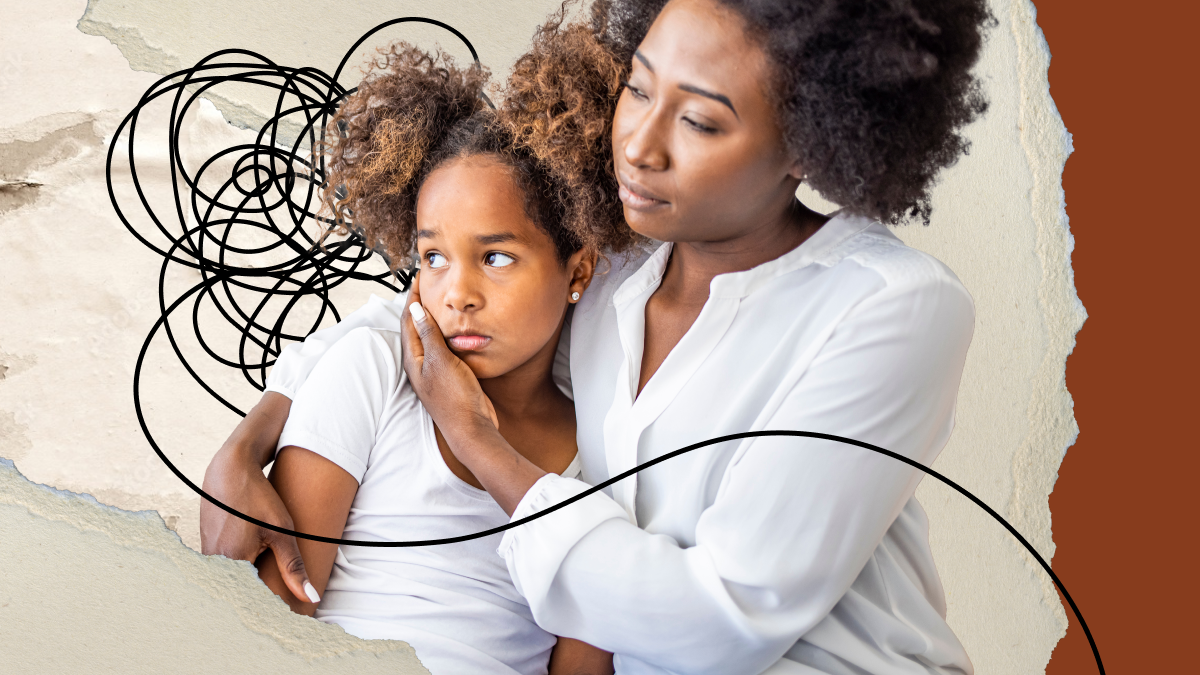Key points
- Most of the time, children who experience very stressful events can recover quickly and well.
- When children develop long-term symptoms from stress due to a traumatic event, which are upsetting or interfere with their relationships and activities, they may have post-traumatic stress disorder (PTSD).
- The first step to treatment is to talk with a healthcare provider to arrange an evaluation.

Overview
Get help now
If you or someone you know is struggling or in crisis, help is available. Call or text 988 or chat 988lifeline.org.
All children may experience very stressful events that affect how they think and feel. Most of the time, children recover quickly and well. However, sometimes children who experience severe stress—such as from an injury, the death or threatened death of a close family member or friend, or violence—will be affected long-term.
The child could experience this trauma directly or could witness it happening to someone else. When children develop long-term symptoms (longer than one month) from such stress, which are upsetting or interfere with their relationships and activities, they may be diagnosed with post-traumatic stress disorder (PTSD).
Signs and symptoms
- Reliving the event over and over in thought or in play
- Nightmares and sleep problems
- Becoming very upset when something triggers memories of the event
- Lack of positive emotions
- Intense ongoing fear or sadness
- Irritability and angry outbursts
- Constantly looking for possible threats, being easily startled
- Acting helpless, hopeless, or withdrawn
- Denying that the event happened or feeling numb
- Avoiding places or people associated with the event
Because children who have experienced traumatic stress may seem restless, fidgety, or have trouble paying attention and staying organized, the symptoms of traumatic stress can be confused with symptoms of attention-deficit/hyperactivity disorder (ADHD). Read a guide for clinicians on deciding if it is ADHD or child traumatic stress.
Examples of events that could cause PTSD include:
- Physical, sexual, or emotional maltreatment
- Being a victim or witness to violence or crime
- Serious illness or death of a close family member or friend
- Natural or manmade disasters
- Severe car accidents
It is important to emphasize that not all children and adolescents exposed to traumatic events will develop PTSD.
Treatment for PTSD
The first step to treatment is to talk with a healthcare provider to arrange an evaluation. For a PTSD diagnosis, a specific event must have triggered the symptoms. Because the event was distressing, children may not want to talk about the event, so a health provider who is highly skilled in talking with children and families may be needed.
Once the diagnosis is made, the first step is to make the child feel safe by getting support from parents, friends, and school, and by minimizing the chance of another traumatic event to the extent possible.
- Psychotherapy in which the child can speak, draw, play, or write about the stressful event can be done with the child, the family, or a group.
- Cognitive-behavioral therapy and cognitive therapy helps children learn to change thoughts and feelings by first changing behavior in order to reduce the fear or worry.
- Medication may also be used to decrease symptoms.
Get help finding treatment
Pediatricians and other healthcare professionals that interact regularly with children can help support children's mental health and work with families to identify when specialist care is needed for diagnosis and treatment. To find a pediatrician near you, visit HealthyChildren.org, a service of the American Academy of Pediatrics (AAP) practice organization.
Families can also seek out referrals for a mental health provider through multiple avenues, including the child's school, a primary care provider, or through health insurance. They can also ask for advice from trusted family or friends who may have some experience with providers in the local area.
If you need insurance coverage, learn more about enrolling in Medicaid, Children's Health Insurance Program (CHIP), or a Marketplace plan at HealthCare.gov. If your child does not qualify for insurance coverage, you can get low-cost health care at a nearby community health center.
Mental health specialists
Here are additional tools to find a healthcare provider familiar with treatment options:
- Psychologist Locator, a service of the American Psychological Association (APA) Practice Organization.
- Child and Adolescent Psychiatrist Finder, a research tool by the American Academy of Child and Adolescent Psychiatry (AACAP).
- Find a Cognitive Behavioral Therapist, a search tool by the Association for Behavioral and Cognitive Therapies.
- If you need help finding treatment facilities, visit FindTreatment.gov.
What CDC is doing
Prevention
It is not known exactly why some children develop PTSD after experiencing stressful and traumatic events, and others do not. Many factors may play a role, including biology and temperament. But preventing risks for trauma, like maltreatment, violence, or injuries, or lessening the impact of unavoidable disasters on children, can help protect a child from PTSD.
Learn about public health approaches to prevent these risks:
Resources
- Post-Traumatic Stress Disorder (PTSD) - American Academy of Child & Adolescent Psychiatry (AACAP) fact sheet
- Practice Parameters – AACAP healthcare provider guidelines for diagnosing and treating mental health conditions in children and adolescents
- Is it ADHD or Child Traumatic Stress? A Guide for Clinicians (The National Child Traumatic Stress Network)
- CDC's Mental Health Homepage
